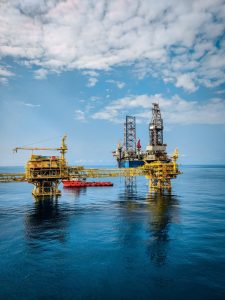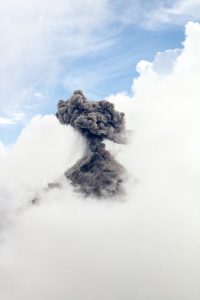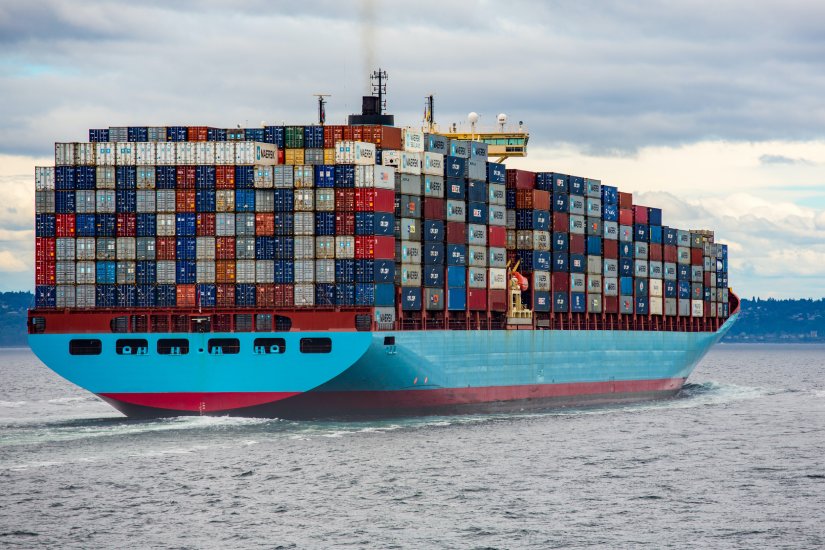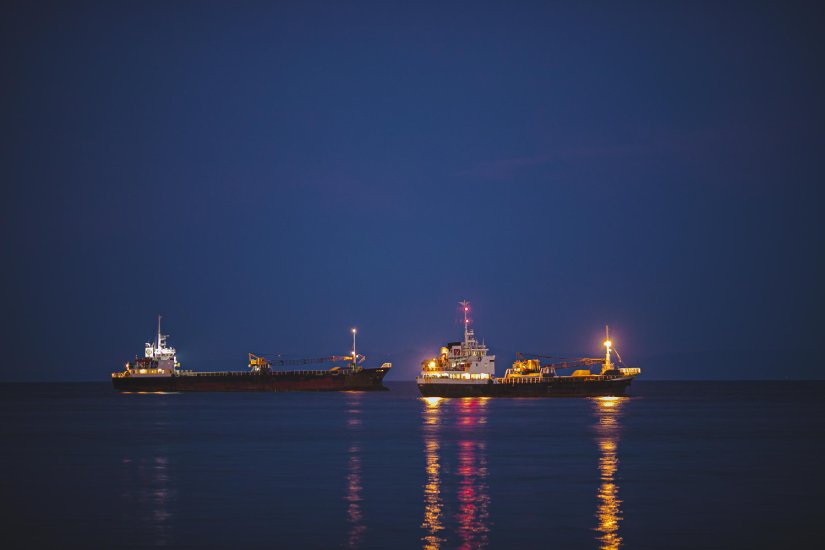Subsea Disaster Responses: How Tech Enhances Crisis Management
23rd Oct 2023

It has been four months since the unfortunate implosion of OceanGate’s Titan. This incident has shed light on the exceptional sophistication of the innovations employed for deepwater crisis management and highlights the tremendous strides we’ve taken in modern-day engineering. As a prominent provider of optical components for submersibles and their corresponding digital elements, we are delving into the important function tech plays when disaster strikes beneath the waves.
While Titan has been notoriously noted as an inadequate craft, the systems deployed to find the lost sub were anything but basic. Some of the world’s most advanced aircraft pressed into service, kitted out with an array of sophisticated devices, such as sonobuoys, magnetic anomaly detectors (MADs), synthetic aperture radars (SARs), electro-optical/infrared turrets, and electromagnetic sensors, among others. Simultaneously, remotely operated vehicles (ROVs) were enlisted to examine depths beyond the reach of human divers and conventional equipment, all in the quest to track down the missing submarine and its five passengers. Remarkably, one of these remote-controlled ROVs played a pivotal part in discovering the debris field near the site of the Titanic’s wreckage.
This recent case in point underscores the very real relevance of high-tech approaches in times of tragedy when the imperative to react quickly and effectively becomes paramount. Regrettably, the outcome of Titan’s expedition proved to be sombre; however, it is through today’s developments that we’ve gleaned an understanding of the circumstances surrounding its collapse.
Oil Spills
 While Titan was not a watercraft intended for daily operations and was primarily reserved for occasional expeditions, there are additional subaquatic applications that encounter significantly high levels of danger regularly. One prime instance is in the oil and gas industry, where a substantial portion of infrastructure operates under the water and demands routine checks and maintenance. Here, the significance of assessments cannot be understated, as early detection is fundamental in averting fatal happenings, such as oil spills. This is exemplified by the startling statistic of 721 spills originating from North Sea facilities between 2019 and 2021 [1].
While Titan was not a watercraft intended for daily operations and was primarily reserved for occasional expeditions, there are additional subaquatic applications that encounter significantly high levels of danger regularly. One prime instance is in the oil and gas industry, where a substantial portion of infrastructure operates under the water and demands routine checks and maintenance. Here, the significance of assessments cannot be understated, as early detection is fundamental in averting fatal happenings, such as oil spills. This is exemplified by the startling statistic of 721 spills originating from North Sea facilities between 2019 and 2021 [1].
Meanwhile, over in the USA, thousands of spills occur every year. That said, the majority involve relatively small quantities, typically less than one barrel [2]. To mitigate these matters and eliminate the requirement for scuba divers to check on pipeline conditions, analysts at the University of Houston are developing autonomous robots to shoulder the responsibility. These ROVs are fitted out with various pioneering mechanisms, including stress wave-based smart touch sensors, video cameras, and scanning sonars [3]. The technological marvels are capable of navigating alongside pipelines to conduct in-depth inspections of high-priority sections like flange bolts, which, according to the Bureau of Safety and Environmental Enforcement (BSEE), have contributed to an increased frequency of accidents leading to leaks [3].
Nature’s Wrath
 Naturally, the waters aren’t immune to nature’s fury such as earthquakes and tsunamis. These occurrences have the capability to harm or disrupt underwater infrastructure. A good example of this was the eruption and tsunami at Hunga Tonga–Hunga Ha’apai in the southern Pacific Ocean in 2022. With a plume rising to 58 km, the event was marked as ‘the most significant recorded atmospheric explosion [4].’ Recently, a group of researchers conducted a study to assess the extent of the destruction caused by this blast, ultimately determining that it obliterated approximately 200 km (124 m) of crucial subsea telecommunications cables [5].
Naturally, the waters aren’t immune to nature’s fury such as earthquakes and tsunamis. These occurrences have the capability to harm or disrupt underwater infrastructure. A good example of this was the eruption and tsunami at Hunga Tonga–Hunga Ha’apai in the southern Pacific Ocean in 2022. With a plume rising to 58 km, the event was marked as ‘the most significant recorded atmospheric explosion [4].’ Recently, a group of researchers conducted a study to assess the extent of the destruction caused by this blast, ultimately determining that it obliterated approximately 200 km (124 m) of crucial subsea telecommunications cables [5].
In an effort to comprehend why Hunga Tonga–Hunga Ha’apai awoke after seven years of dormancy, scientists were devoted to uncovering the underlying reasons. However, they didn’t rely on submersion; instead, they harnessed technology from above. Through the utilisation of numerous satellites, Simon Proud, a Satellite Data Researcher at the University of Oxford, along with his colleagues, were able to visually estimate the height of the plume’s canopy, offering insights into the eruption’s ‘explosiveness’. Furthermore, to delve deeper into the origins of the tsunami, Proud pointed out that although it is tempting to attribute it solely to the blast, its true origin story is more complex. To explore further, Proud suggests the feasible use of robotic diving vehicles, which could be instrumental in examining the seafloor and assessing any changes in the volcano’s formation or the emergence of new openings [6].
Unexploded Ordnance (UXO)
Other hidden dangers lie deep below the water’s surface in the shape of untriggered bombs and remnants of war. Regions with a history of military activities face the looming threat of Unexploded Ordnance (UXO), which can jeopardise oceanic constructions and the safety of those working in the division.
UXO removal is a meticulously planned and highly specialised process. As an illustration, this May, the Royal Navy, as part of a NATO security mission, embarked on an assignment to improve the safety of vital Baltic Sea shipping lanes. During the operation, a remarkable feat was accomplished: two ground mines and one torpedo were carefully retrieved in a single day [7].

The achievement was made possible by employing revolutionary tech in the form of autonomous underwater vehicles (AUVs) equipped with state-of-the-art sensors. The AUVs were used to create detailed images of submerged objects, permitting the identification and non-hazardous extraction of dangerous ordnance.
Impacts & Collisions
Accidents involving ships, submarines, other submersibles and infrastructure can result in damage and leaks, creating risks for both worker welfare and the ecosystem. Notably, huge advancements in safety measures have taken place over the past few years. To give an example, in the 1990s, the global fleet experienced over 200 vessel losses annually, but the alarming figure plummeted to fewer than 40 by the end of 2022 [8].
Nevertheless, despite the improvements, it’s necessary to acknowledge that obstacles still exist. In 2022, there were 3032 reported shipping incidents, with a total loss of 38 vessels exceeding 100 gross tons (GT). Among the factors contributing to losses, fires and explosions came in as the second most common cause, while collisions ranked third [8].

Forward-thinking companies are actively pursuing resolutions to enhance statistics, and one promising avenue is the integration of artificial intelligence (AI). Dor Raviv, the CTO and Co-Founder of Orca AI, makes a compelling case that the navigational tools and anti-collision methods utilised by seafarers for centuries have seen minimal innovation. He believes AI-powered technologies have the potential to revolutionise maritime safety by providing continuous, vigilant monitoring and robust analysis of a ship’s surroundings, thereby bolstering situational awareness and safe navigation at sea [9].
Subsea Spectacles: The Unseen Components Helping Disaster Response
In the ever-evolving sphere of the subsea arena, current affairs have underscored the critical role that optics play when dealing with crises. Whether it’s the need to locate an underwater vehicle like OceanGate’s Titan, prevent catastrophic oil spills, understand the influence of natural disasters, or safely remove UXO, cutting-edge technology is the key to effective responses.
 From the depths of the big blue to the marine bed, and even in the realm of collision avoidance, optical components are the silent saviours, enabling us to see, analyse, and respond swiftly.
From the depths of the big blue to the marine bed, and even in the realm of collision avoidance, optical components are the silent saviours, enabling us to see, analyse, and respond swiftly.
As a trusted supplier of these essential optics, we remain committed to advancing our knowledge and solutions, ensuring that our contributions in the subsea sector continue to keep pace with the ever-changing challenges of this dynamic environment.
FOOTNOTES:
[1] https://bylinetimes.com/2023/01/31/hundreds-of-toxic-north-sea-oil-spills-since-2019/
[4] https://www.jpl.nasa.gov/images/pia26006-hunga-tonga-hunga-haapai-eruption
[5] https://interestingengineering.com/science/tonga-volcano-underwater-telecom-cables
[6] https://www.wired.co.uk/article/tonga-volcano-eruption-science
[9] https://www.ship-technology.com/comment/avoiding-collisions-at-sea-using-ai/?cf-view